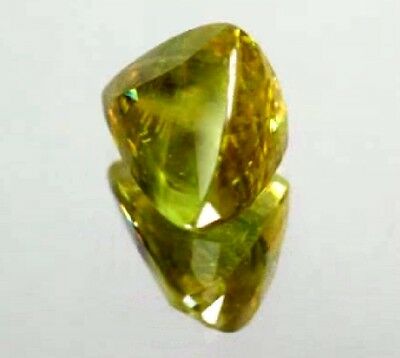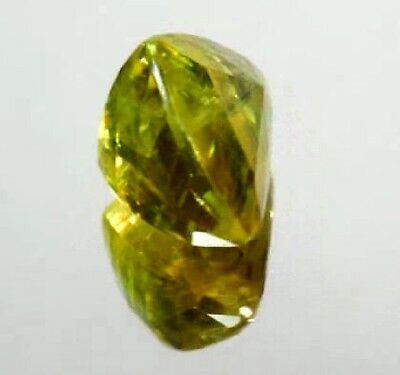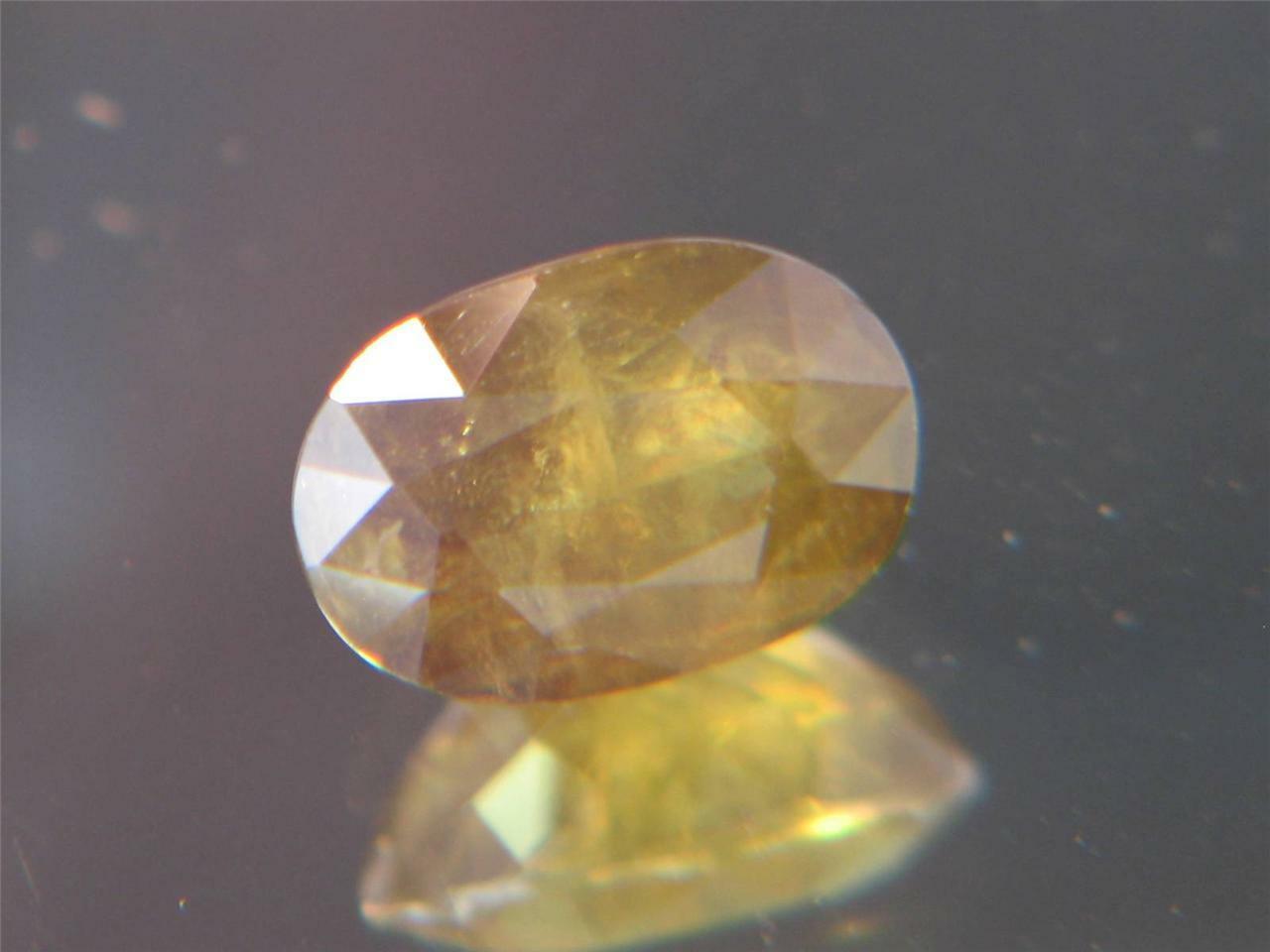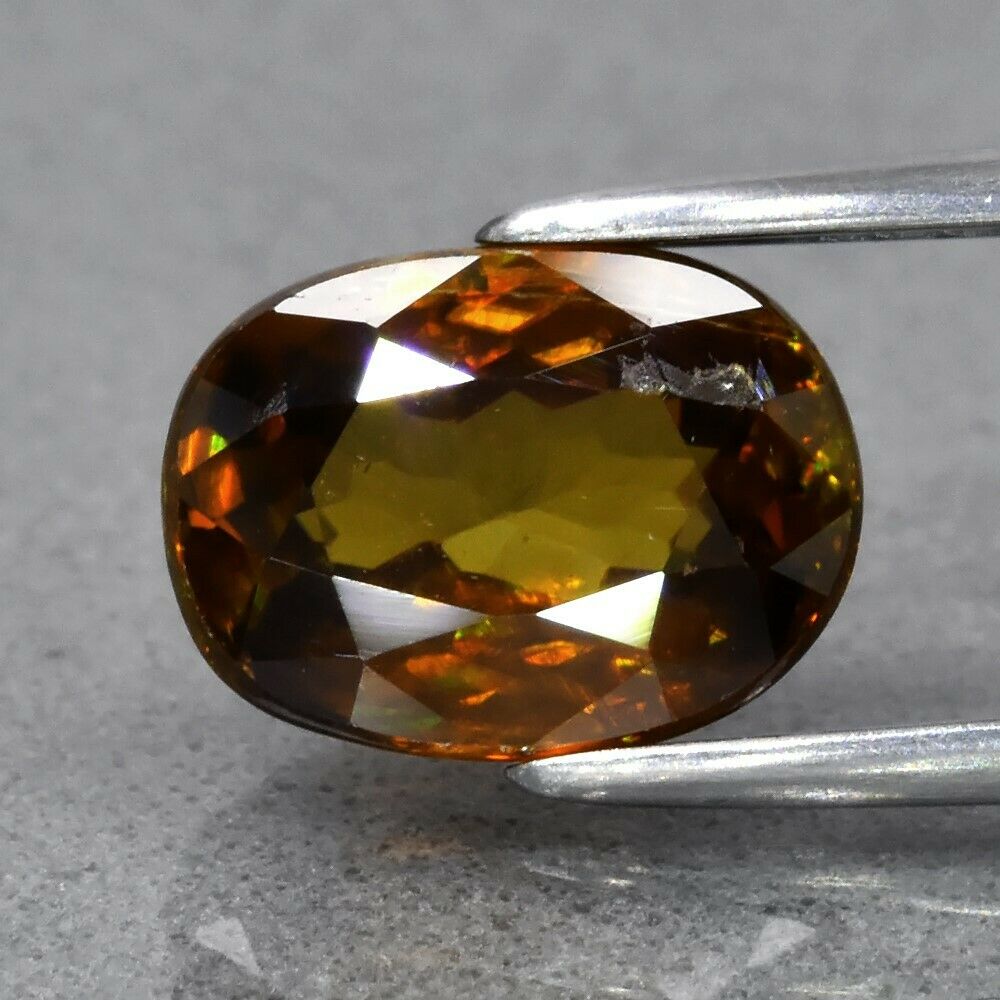-40%
6.07 cts Rare Natural Trillion-cut Flashing Green->Yellow VS Sphene (Brazil)
$ 316.8
- Description
- Size Guide
Description
6.07 cts Rare Natural Trillion-cut Flashing Green->Yellow VS Sphene (Brazil)New without Tags. This gem has never been used/placed/set in a setting.
It is utterly undamaged, unmarred and in perfect condition as expected of NWOTags.
I have included two Sphene articles below for your appreciation and enjoyment.
Summary of below:
"
Sphene is a very rare brilliant yellowish-green, green, orange or brown gemstone with a high lustre, also known as "titanite" due to its titanium content.
" ... "
Due to its strong dispersion, when brilliant-cut, sphene can exhibit a fire similar to that of diamond.
" ... "
Sphene is not generally treated or enhanced, though the colour can be changed to red or orange by heating. However, most sphene gemstones are untreated and naturally orange and reddish sphene is available.
"
Type: Natural Sphene (or Titanite)
(personally confirmed as Natural Sphene by digital refractometer (RI=1.849), dichroscope (wild birefringence!), polariscope (four flashes per rotation; not glass), spectroscope, UV short&long-wave light, measured Specific Gravity=3.55) -- gemgym
Color: Flashing Green->Yellow/multicolor
"In addition to its exceptional fire, sphene is also strongly pleochroic, meaning it displays more than one color when viewed from different angles. Sphene typically displays at least three colors (colorless, greenish-yellow, reddish) depending on the viewing angle."
(some may call them "color-changing"; but really, they are Pleochroic)
-- gemgym
Shape: Trillion-cut
Dimensions: 11.93mm x 9.81mm x 8.19mm
Weight: 6.07 cts
Luster: Beautiful
"
Due to its strong dispersion, when brilliant-cut, sphene can exhibit a fire similar to that of diamond.
"
Clarity: VS
"Sphene is rarely free from inclusions and eye clean stones are rare."
Hardness: 5.0~5.5 rating on the Mohs Scale
Treatment: Not Heated, Not Enhanced, Not Treated
"
Sphene is not generally treated or enhanced, though the colour can be changed to red or orange by heating. However, most sphene gemstones are untreated and naturally orange and reddish sphene is available.
"
Origin: Brazil
She came as an infant, moody and maddeningly fickle.
We never knew what would set her towards
Green or Yellow
.
Howsoever dynamic though, she is beautiful for it.
But now, she bristles and brays with boredom.
She's matured beyond the Elderly Two-of-Us.
We understand and will send her to who will love her away.
Will you be the next to love her and cherish her?
We are an eBay eStore enterprise focused on selling mostly Loose Natural Gemstones. Stay here, look around and learn. Via eBay Messaging, ask us questions, make an offer, and otherwise discuss your wishes, concerns and hopes. We pride ourselves as good-spirited folks having fun and doing our best to share the joy of Nature's most beautiful and enduring literal treasure -- Natural Gemstones. Expect to find us cheerful and trustworthy, and we will expect the same of you. For us, Negative FeedBack as a means of coercion is never needed and only degrades everyone's enjoyment in what should otherwise be a fun shopping experience. And finally, please enjoy my work as eBay's First (unofficial) Gemstone Poet. -- gemgym
=====================================================================
Sphene Gemstone Information
About Sphene - History and Introduction
Sphene is a very rare brilliant yellowish-green, green, orange or brown gemstone with a high lustre, also known as "titanite" due to its titanium content. The name "sphene" comes from the Greek word, "sphen", meaning "wedge", which alludes to the formation of its crystals. Due to its strong dispersion, when brilliant-cut, sphene can exhibit a fire similar to that of diamond.
Sphene has been known since 1787 and was named according to its titanium content in 1795 by Martin Klaproth. In 1801, it was given the name "sphene" by French mineralogist, Rene Just Hauy. In 1982, the International Mineralogical Association Commission on New Minerals and Mineral Names (CNMMN) decided to use the name "titanite" rather than "sphene". However, both "sphene" and "titanite" continue to be recognized in mineralogy circles, and sphene is the most frequently used gemmology term.
Sphene Gemstone
Identifying Sphene
Sphene can be identified by its high lustre, a refractive index that is typically over the limit of standard refractometers and intense fire, caused by a high dispersion. Sphene has a similar refractive index to
zircon
, but can be distinguished from zircon by its Mohs hardness score of 5 to 5.5, whereas zircon has a Mohs hardness of 6.5 to 7.5.
Sphene; Origin and Gemstone Sources
Sphene deposits are found in Brazil, Burma (Myanmar), India, Kenya, Madagascar, Mexico, Austria, Sri Lanka (Ceylon) and the USA.
Buying Sphene and Determining Sphene Gemstone Value
Sphene Colour
Sphene can occur yellow, brown, green or reddish and various shades in between, such as cognac colour. Intense green sphene is also known as "chrome sphene", due to the colour agent being chromium. "Chrome sphene" and yellowish-green sphene are the most desirable colours. Reddish sphene gets its colour from manganese impurities and is sometimes referred to as "greenovite".
Sphene Clarity and Lustre
Sphene is rarely free from inclusions and eye clean stones are rare. Gemstones in sizes over 5 carats are also rare and are highly valued. Sphene has an adamantine lustre, which combined with its high dispersion, makes it an attractive gemstone.
Sphene Cut and Shape
Sphene is cut in a variety of faceted shapes that show off its high dispersion and adamantine lustre. Sphene can be seen in shapes such as octagons, trillions, squares, rounds and fancier shapes, such as ovals, pears and cushions. Translucent to opaque stones are often cut en cabochon. Sphene can present a challenge to lapidarists, due to its brittle tenacity and softness, but is worth the effort, since when faceted and polished it yields stunning results.
Sphene Treatment
Sphene is not generally treated or enhanced, though the colour can be changed to red or orange by heating. However, most sphene gemstones are untreated and naturally orange and reddish sphene is available.
=====================================================================
The Brilliance of Sphene
In the gemstone world we have a number of technical terms we use to describe the
luster
of a gemstone. These terms include metallic, adamantine, pearly, silky, vitreous, resinous and waxy. The term
adamantine
means 'like diamond' and is used to refer to gemstones that have especially high
brilliance
and intensive
dispersion
or fire.
There are very few gemstones that have a luster that deserves to be called adamantine. Diamond is one, of course; the rare demantoid
garnet
is another (the name 'demantoid' means 'diamond-like'). But one of the members of this exclusive group is a gem that few people have heard of, and even fewer have seen;
sphene
.
Sphene is composed of calcium titanium silicate and is also known by its mineralogical name, titanite. The name
sphene
comes from the fact that its crystals are typically sphenoid (from the Greek
sphenos
meaning wedge). The name titanite comes, not surprisingly, from its titanium content.
Sphene occurs as
translucent
to
transparent
, reddish brown, gray, yellow, green, or red monoclinic crystals. Sphene has an unusually high refractive index (1.843 to 2.110), higher than
zircon
,
ruby
and
sapphire
(but lower than diamond which is 2.417-2.419). But it is sphene's dispersion, or fire, which is truly exceptional, exceeding even that of
diamond
.
When you hold a gemstone and turn it in the light, some gems will display flashes of color, which is the result of the dispersion of white light into the colors of the spectrum. Dispersion occurs when different wavelengths of light are separated by refraction. Diamond is famed for this quality, but sphene actually has a higher dispersion value than diamond. This is why high quality sphene typically looks multicolored in photographs.
In addition to its exceptional fire, sphene is also strongly pleochroic, meaning it displays more than one color when viewed from different angles. Sphene typically displays at least three colors (colorless, greenish-yellow, reddish) depending on the viewing angle. Sphene is usually found with some inclusions and the rare clean pieces are highly sought after.
Sphene has traditionally been rare and is mainly favored by collectors. Recently the supply has improved with new material from Sri Lanka and Madagascar, and sphene is now being used for jewelry. However, sphene is diamond-like only in some respects. It is a fairly soft stone - 5 to 5.5 on the
Mohs scale
- about the same hardness as
apatite
,
chrome diopside
,
turquoise
and
lapis lazuli
. So sphene is not suitable for everyday-wear rings, but it makes outstanding pendants and earrings.

















